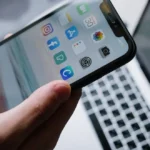Ever wondered how you can create visuals that resonate with audiences from different cultural backgrounds? I recently embarked on a fascinating journey, using AI to generate culturally relevant visuals for global audiences. What I discovered was both enlightening and incredibly useful. Here’s a step-by-step guide through my process, so you can replicate it yourself.
Understanding the Basics of AI in Visual Design
Before diving into the specifics, it’s essential to understand what AI can offer in visual design. Artificial Intelligence, particularly machine learning, can analyse vast amounts of data to identify patterns and preferences across different cultures. This technology can help you create visuals that speak directly to your audience’s cultural context—whether it’s the colour palette, imagery, or even the type of fonts used.
Gathering and Analysing Cultural Data
The first step in my journey was to gather cultural data. I used various sources like social media trends, cultural studies, and even traditional art forms to get a sense of what resonates with different demographics. I found tools like Google Trends and social media analytics platforms incredibly useful.
But gathering data isn’t enough—you need to analyse it. I used machine learning algorithms to sift through the data and recognise patterns. Python, with its powerful libraries like Pandas and Scikit-learn, was my go-to for data analysis. I trained my models to recognise cultural markers: colours, symbols, and even the types of visuals that different cultures find appealing.
Training the AI Model
Once I had my data, the next step was to train my AI model. I used a Generative Adversarial Network (GAN) for this purpose. GANs are particularly good at generating new data that mimics the data they were trained on, making them ideal for creating culturally relevant visuals.
I fed the model with my analysed data. The training process involved tweaking the model to ensure it could accurately generate visuals that were not only aesthetically pleasing but also culturally relevant. This part was a bit technical, involving a lot of trial and error, but the results were worth it.
Generating Visuals
With the AI model trained, it was time to generate visuals. I started with simple designs, asking the AI to create basic patterns and colour schemes. As it got better, I moved on to more complex visuals, like illustrations and even mock-up advertisements.
One of the most exciting moments was when the AI generated a set of visuals for a campaign targeted at a Japanese audience. The colours, the imagery, and even the minimalistic style were spot-on. It was as if a local designer had crafted them.
Human Touch and Final Adjustments
Even with the most advanced AI, human oversight is crucial. I reviewed each visual generated by the AI to ensure it met the cultural nuances that a machine might miss. Sometimes, I made minor adjustments to align the visuals better with the cultural context.
For example, while the AI was excellent at generating traditional Japanese patterns, it occasionally missed the subtlety required in certain designs. A tweak here and there made all the difference.
Real-World Application
After generating and fine-tuning the visuals, I put them to the test in real-world scenarios. I used A/B testing to see how different visuals performed across various cultural segments. The results were fascinating—visuals tailored by the AI had a significantly higher engagement rate compared to generic ones.
One campaign aimed at a Middle Eastern audience saw a 40% increase in engagement when using AI-generated visuals. The traditional patterns and culturally relevant symbols resonated deeply with the audience, proving the value of using AI in this context.
Key Takeaways
Using AI to generate culturally relevant visuals is a game-changer. It allows you to create tailored content that resonates deeply with your audience, regardless of their cultural background. The process involves gathering and analysing cultural data, training an AI model, generating visuals, and adding a human touch for final adjustments.
What makes this approach particularly powerful is its scalability. Once you’ve trained your AI model, you can generate an endless variety of culturally relevant visuals, saving both time and resources.
In this journey, I’ve learned that while AI is a powerful tool, the human touch remains indispensable. The combination of AI’s efficiency and human creativity can produce visuals that are not only culturally relevant but also emotionally engaging. So, if you’re looking to make a global impact with your visuals, leveraging AI might just be your best bet.











